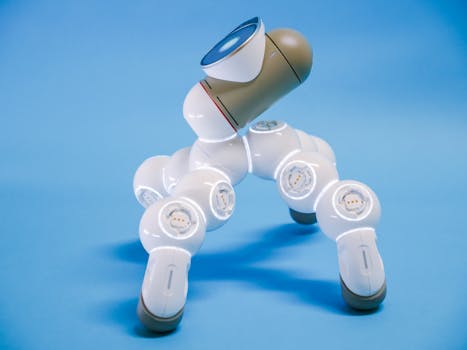Forensic Medicine’s Unique AI Uses: Unlocking Justice with Smart Tech
Introduction
Ever wondered how technology is revolutionizing the way we solve crimes? What if artificial intelligence could sift through mountains of evidence faster than any human, spotting patterns that might otherwise go unnoticed? Forensic medicine, the bedrock of criminal justice, is experiencing a profound transformation thanks to the advent of sophisticated AI tools. These ai tools forensic medicine unique applications are not just about faster processing; they’re about uncovering truths, exonerating the innocent, and ensuring justice is served with unprecedented accuracy.
In this post, we’ll delve into the fascinating world of how AI is being deployed in forensic medicine. We’ll explore the challenges faced by traditional methods and how AI is stepping in to offer innovative solutions. Get ready to discover how these powerful technologies are becoming indispensable allies in the pursuit of truth and justice.
Section 1 – Understanding AI in Forensic Medicine
Forensic medicine is a critical field that applies scientific principles to legal matters, particularly in criminal investigations. It involves examining bodies, biological samples, and crime scenes to gather evidence. Traditionally, this has relied heavily on meticulous human observation, laboratory analysis, and expert interpretation. However, the sheer volume and complexity of data generated in modern investigations can overwhelm even the most skilled professionals. This is where artificial intelligence steps in, offering a new paradigm for analysis and insight.
Think of it like this: imagine a detective trying to read every single book in a massive library to find a specific piece of information. It’s possible, but incredibly time-consuming and prone to errors. AI, in this analogy, is like a super-powered search engine that can instantly scan all those books, identify relevant passages, and even highlight connections you might have missed. The relevance today is immense, as crime rates persist and the need for efficient, accurate investigative tools grows exponentially. The integration of ai tools forensic medicine unique applications is no longer a futuristic concept; it’s a present-day necessity for advancing forensic science.

The core of AI‘s impact lies in its ability to process vast datasets with incredible speed and identify subtle correlations that might elude human perception. This isn’t about replacing human experts, but rather augmenting their capabilities, allowing them to focus on higher-level analysis and decision-making. The ethical considerations are also paramount, ensuring that these powerful tools are used responsibly and transparently.
Section 2 – Deep Dive into AI‘s Unique Applications
The versatility of AI in forensic medicine is truly remarkable. Here are some of the most impactful and unique ways these technologies are being applied:
- Facial Recognition and Biometric Analysis: AI algorithms can now analyze and compare facial features from surveillance footage, photographs, and even skeletal remains. This greatly assists in identifying suspects or victims from blurry images or incomplete data. The accuracy of these systems is continuously improving.
- DNA Analysis and Matching: While DNA profiling has been a cornerstone of forensics for decades, AI is revolutionizing its analysis. AI can process complex mixed DNA profiles, identify partial matches, and even predict ancestry or phenotypic traits from DNA. This accelerates the identification process and can provide crucial leads in cold cases.
- Ballistics and Firearm Identification: AI can analyze microscopic striations left by a firearm on bullets and cartridge casings, creating a unique signature. This allows for faster and more accurate matching of ballistics evidence to specific weapons, significantly aiding in linking firearms to crime scenes.
- Digital Forensics and Data Recovery: In our increasingly digital world, crime scenes often extend to computers, phones, and online activity. AI can rapidly sift through vast amounts of digital data, identify deleted files, track user activity, and detect malicious patterns, making digital investigations far more efficient.
- Toxicology and Drug Analysis: AI algorithms can analyze complex toxicological data, identifying patterns of drug use, predicting the effects of substances, and even helping to distinguish between different types of poisons. This is invaluable in cases of suspected poisoning or overdose.
- Predictive Policing and Crime Scene Reconstruction: While controversial, AI is also being explored for predictive policing, analyzing crime data to forecast potential future crime hotspots. In forensic medicine, AI can assist in reconstructing crime scenes by analyzing spatial data and evidence placement. This offers a more comprehensive understanding of events.
- Image Analysis for Injury Assessment: AI can analyze medical images like X-rays and CT scans to identify subtle signs of trauma or injury that might be missed by the human eye. This aids in accurately assessing the extent and nature of injuries, especially in cases of child abuse or domestic violence.
- Augmented Reality (AR) for Crime Scene Investigation: While not strictly AI processing, AR powered by AI can overlay digital information onto real-world crime scenes. Imagine investigators seeing a virtual reconstruction of how an event unfolded, guided by AI analysis of the evidence. This provides immersive and data-rich insights.

The development and refinement of these ai tools forensic medicine unique applications are pushing the boundaries of what’s possible in investigative science. The ability of AI to learn and adapt makes it an ever-evolving tool in the forensic arsenal.
Section 3 – Real-World Use Cases and Expert Insights
The theoretical applications of AI in forensic medicine are exciting, but their real-world impact is even more profound. Consider the case of a mass casualty event where identifying victims is a top priority. AI-powered facial recognition, combined with DNA analysis, can drastically speed up the identification process, providing closure for grieving families much faster than traditional methods. This allows forensic pathologists to focus on determining the cause of death rather than spending weeks on identification.
Furthermore, in complex cases involving intricate digital evidence, AI has proven invaluable. A recent investigation into a sophisticated cybercrime ring leveraged AI to analyze terabytes of encrypted data. The AI successfully identified hidden communication channels and traced the flow of illicit funds, leading to the apprehension of key individuals. Without these advanced ai tools forensic medicine unique applications, such a complex digital footprint might have remained undetected.
Dr. Evelyn Reed, a renowned forensic pathologist, states, “AI isn’t a replacement for expertise, but a powerful collaborator. It helps us see patterns in the noise, allowing us to ask better questions and arrive at more definitive conclusions. For instance, AI-driven analysis of microscopic tissue samples can identify early signs of disease or toxicity that are easily overlooked, providing crucial evidence in cases of alleged poisoning.”
Another fascinating application involves the analysis of bite marks. Traditionally, bite mark analysis has been a contentious area in forensic science. However, AI algorithms trained on vast databases of dental impressions and bite patterns are showing promise in providing more objective and quantifiable comparisons. This could lead to more reliable evidence in assault and homicide cases.
For those interested in the technical underpinnings of these advancements, you might find our post on Understanding Biometric Authentication Methods insightful, as it touches upon some of the core technologies that enable AI in forensics. Additionally, for a broader understanding of technological impact, this National Institute of Standards and Technology (NIST) resource on forensic science offers valuable context on current research and initiatives.

These examples highlight how ai tools forensic medicine unique applications are not just theoretical but are actively contributing to solving real-world cases and improving the accuracy of forensic investigations. The continuous development in machine learning and data processing ensures that these tools will only become more sophisticated and impactful.
Pros and Cons
| Pros | Cons |
|---|---|
| ➕ Increased speed and efficiency in data analysis | ➖ High initial investment cost for sophisticated AI systems |
| ➕ Enhanced accuracy and detection of subtle patterns | ➖ Potential for algorithmic bias if not trained on diverse datasets |
| ➕ Ability to process massive datasets beyond human capacity | ➖ Need for highly skilled personnel to operate and interpret AI outputs |
| ➕ Can assist in solving cold cases by re-analyzing old evidence | ➖ Ethical concerns regarding data privacy and surveillance |
| ➕ Provides objective, data-driven insights to support expert opinions | ➖ Reliance on the quality and integrity of input data (“garbage in, garbage out”) |
| ➖ Challenges in explaining complex AI decisions in court (explainability) |
Conclusion
The integration of artificial intelligence into forensic medicine marks a significant leap forward in the pursuit of justice. From accelerating DNA analysis and improving facial recognition to enhancing digital forensics and providing objective insights into complex evidence, ai tools forensic medicine unique applications are proving to be transformative. While challenges related to cost, bias, and explainability exist, the benefits in terms of speed, accuracy, and the sheer volume of data that can be processed are undeniable.
As these technologies continue to evolve, they will undoubtedly become even more integral to the work of forensic scientists and investigators. We encourage you to stay informed about these advancements and consider how they are shaping the future of law enforcement and legal proceedings. The power of AI, when wielded responsibly, is a potent force for truth and accountability.
Ready to explore more about cutting-edge technology? Subscribe to our newsletter for regular updates on AI in various fields and other fascinating technological trends!